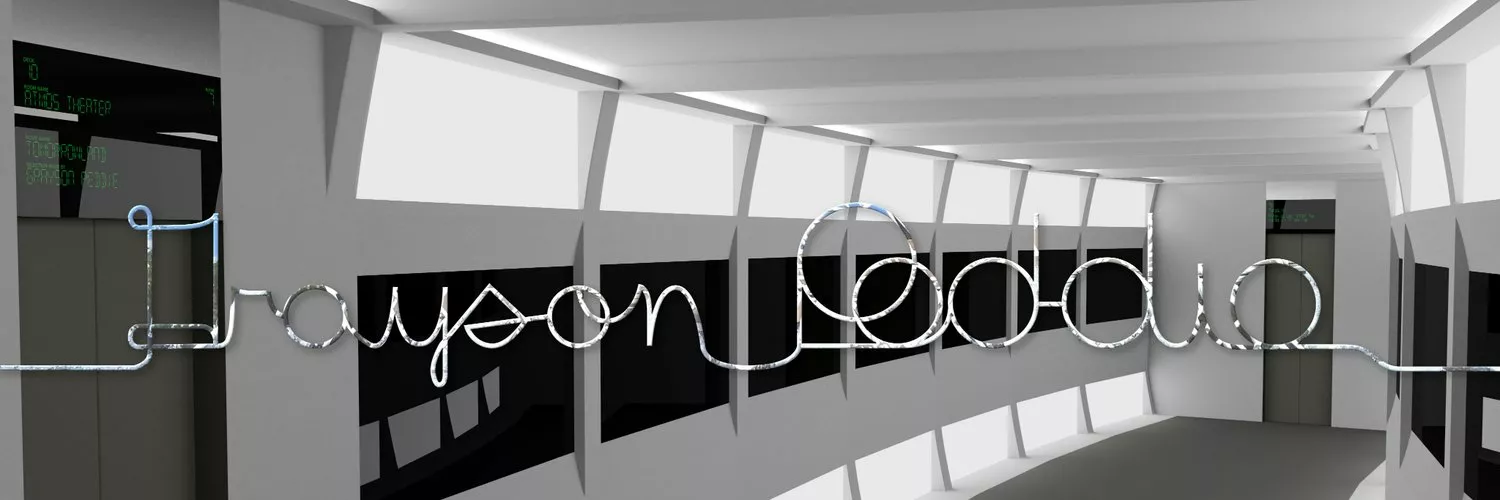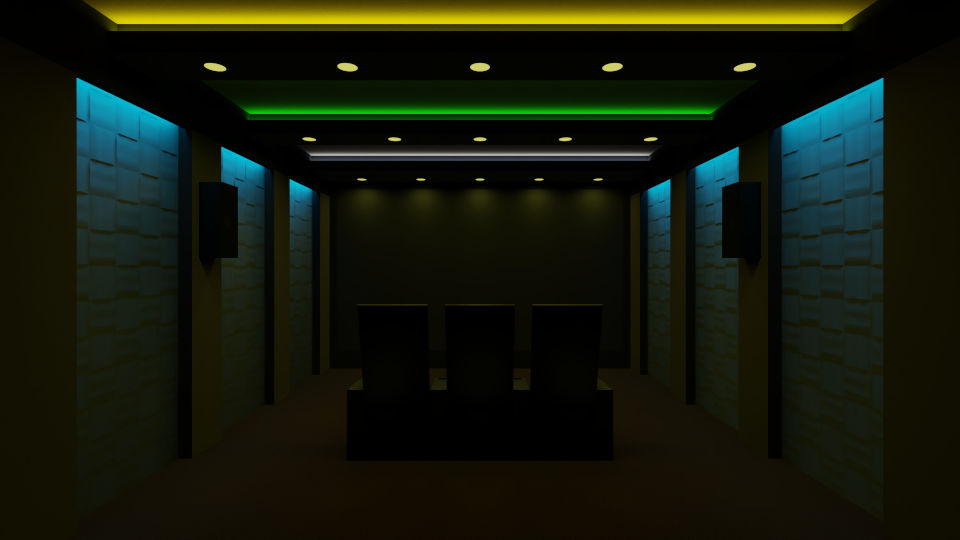A Nice Home Theater Processor That Makes Me Drool!
Who is this blog article for?
Anyone who is into home theater electronics and those who understand home theater terms such as a home theater receiver, a home theater processor, and eARC. This article is unsuitable for blind users who do not have eyesight.
A Cool New Home Theater Processor!
I received an email from AVSForum about a 9.4.6 Home Theater At CEDIA That You Definitely Don't Want To Miss (that's 9 speakers near the wall, 4 subwoofers (2 front, and 2 rear subwoofers), and 6 ceiling speakers) and I came across a processor that is used at CEDIA called StormAudio ISP Elite MK3, so I went to that page and–wow! A multi-theater processor!!!
Okay, so what does that do? Does the ISP processor... (Interrupted by the "I don't care about cookies" web page as I type. A browser extension in Firefox about getting rid of cookie warnings or cookie notifications in websites opened up a new tab after updating a browser extension as I type. Now I'm getting off-topic. Thanks to you, browser extensions!)
Hah... 😆 Let me get myself back in control of my moment as I write my blog post. Because that cool new home theater processor interests me a lot! 🤣😀
Okay, so what does that new home theater processor do? Does the ISP processor let me have multiple theaters? Yes! That's having two home theater processors in one processor! Okay, let me explain. Most people that have a surround sound system typically have a home theater receiver with amplifiers built-in. A processor does not have an amplifier, so it needs an external amplifier. An ISP processor can have up to 32 channels of audio. That's 32 speakers. What!? 32 speakers!? Yes. "But you don't need 32 speakers–let alone 4 or 8 subwoofers for a dedicated home theater room," you exclaimed. That's true, but that's not the point. Think about AMC Theatres. If you have been to a movie theater, you know AMC Theatres has so many auditoriums, right? Think about just one device that can connect to 16 speakers per theater room. Actually, commercial movie theaters do have multiple rows of surround speakers. Each row of surround speakers can be located to the left and right side of the room and can surround multiple rows of seating. Of course, that can be done using a StormAudio ISP processor, but that's not what I am interested in.
What piked my interest is the multi-theater feature of the StormAudio ISP MK3 processor. This would allow me to assign 16 channels of audio to a dedicated home theater room and 8 channels of audio to my home office/gaming/studio room. A home theater processor has two HDMI outputs. One HDMI output is linked to the 16 channels for the home theater room. Another 8 or 16 channels of audio (depending on the modules installed in a processor) can go to my home office/gaming/studio room. So people might be thinking "is it possible for a home theater receiver with an integrated amplifier to have 32 channels of amplification?" The problem with that is, the home theater receiver's power supply is very limited in terms of the amount of current that must be pushed from an electrical outlet to the speakers. The receiver can get so hot to the touch even if nothing is playing. That's why going with external amplifiers is better when playing at high volumes. A dedicated home theater room needs to be connected to a dedicated circuit breaker in order to provide enough power to the speakers in a dedicated home theater room. For a computer room, I may not need a lot of power, so a 700w amplifier going into 7 channels (that's 100 watts each per speaker) is more than enough for me.
Although the price of the StormAudio ISP MK3 processor is sky-high, for me, that is similar to buying two cheaper home theater processors, but the cool thing about this is I could have more speakers in a dedicated room and still have leftover for the speakers in the computer room. And I could control the processor to show me a different video source going out to HDMI 2, which is the connector going out to my computer room. If I want to see what's playing in a dedicated movie theater from a computer room, I can do that because the processor acts as a hub. Sure, if I could find a multi-theater processor at a lower price than the StormAudio, that's great, but I get what I pay for. Right now, the MK3 only supports HDMI 2.0, which means I cannot game at 4K (3840x2160) at 120Hz and my TV (Samsung 43" QN90B) supports HDMI 2.1.
I have my PC connected to my TV, then from the TV to an eARC HDMI audio extractor, and then to my Denon AVR-X3400H which does not support eARC. Basically, eARC allows 5.1 or 7.1 surround sound audio to come directly from the TV and the audio passes into a receiver's HDMI out for the receiver to process audio information so that the sound can output through the speakers. But because my home theater receiver does not support eARC, I use an audio extractor (that I linked above) in order to supply audio going out to my receiver. Here's how it works:
- "HDMI Out" from an audio extractor connects to my Samsung 43" QN90B's HDMI 3, which lists "eARC." Connecting an audio extractor to HDMI 1, 2, or 4 in the back of my TV won't work as those HDMI ports do not provide eARC support.
- "HDMI Audio Out" connects to my Denon AVR-X3400H's audio input. This allows my receiver to process audio that came from my PC that hooks up to my TV's HDMI 2.1 inputs.
- "HDMI Input" from an audio extractor connects to my Denon AVR-X3400H's HDMI Output. This allows me to select HDMI3 on my TV. Any video going from my receiver to my TV passes through my audio extractor's HDMI input.
And that's all there is to it! In short, my PC connects to my TV via an HDMI cable, the TV connects to an audio extractor, and an audio extractor connects to my receiver. An HDMI audio extractor avoids having me buy a new receiver. Think about this. Back on late 2018, my Marantz SR-5008 was having issues and the audio continues to make squealing noise after the outbreak of Hurricane Michael. Since January of 2019, I wanted a new receiver. Should I buy a Denon AVR-X3500H which supports eARC or should I buy a Denon X3400H which does not? Back around August of 2013, I bought a 4K-ready receiver, thinking that $900 would give me a much better sound compared to Marantz SR-5007, which was a discontinued model. That's why I bought myself into that "$900" hype! Bad! Bad mistake! So let me ask you this. Would you spend $300 extra just for eARC support? Me? I don't think so. I bought a Denon X3400H just to save $300 in the process. Sure, Amazon mentioned that X3400H is a discontinued model (yes, it "was" as it's past-tense, but let's forget about the tenses for now), but I bought it anyway! Why? So I can quit being a fool! The sound character is the same regardless of whether it's a 2010 model or a 2022 model!
Of course, I've gotten way too far off-topic from my article, but the point is, I'm going to wait for ISP to come out with a new processor that supports HDMI 2.1 such as 4K at 120Hz. 4K at 120 Hz would last for a very long time for me. Maybe a decade? Even if HDMI Alliance (or whatever it's called) upgrades to 8K (a resolution of 7680 by 4320) at 120Hz? Okay, hold on a minute. Today, I don't think modern graphics cards can even handle 4K at 120 frames per second or even at 240 FPS unless people play older games or turn down the graphics settings. I mean, I'm talking Cyberpunk 2077 that can push even an NVIDIA RTX 3090 so hard that gamers can't get more than 90 to 100 frames per second. So, HDMI 2.1 will be with us for a very long period of time. Well, I'm pretty sure that games such as Cyberpunk 2077 could run the GPU (graphics processor unit) down to 20 frames per second or even lower. 😂🙂
Anyway, one day I could save up my money for an awesome StormAudio home theater processor. One day. That is, if I could get into network engineering and make a whole lot of money (I am Cisco CCNA certified as of October 2021; I am CompTIA CySA+ certified as of August 23rd of this year, which renewed my CompTIA A+, Network+, and Security+ certifications).
Related Article:
Article published: 2022-18-19 18:19
Categories: Home Theater

